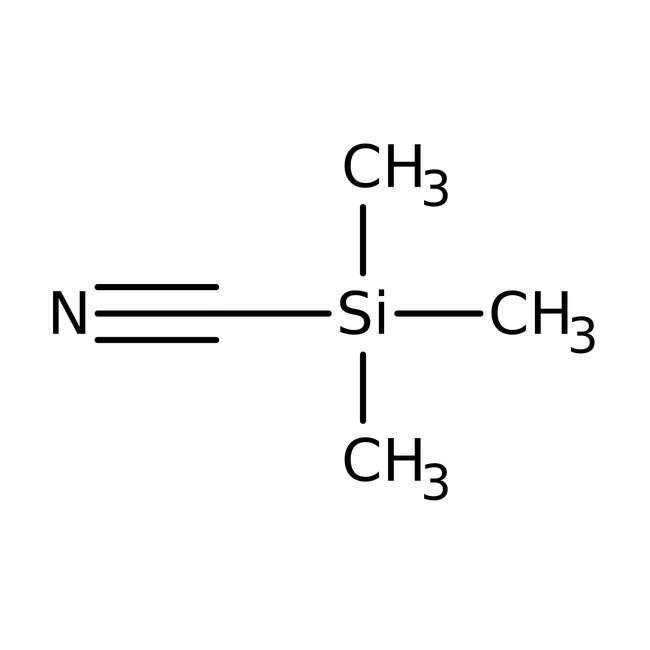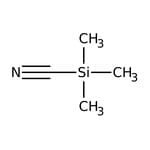Search Thermo Fisher Scientific
Trimethylsilyl cyanide, 97%, Thermo Scientific Chemicals



Trimethylsilyl cyanide, 97%, Thermo Scientific Chemicals
Chemical Identifiers
Specifications
Description
This Thermo Scientific Chemicals brand product was originally part of the Alfa Aesar product portfolio. Some documentation and label information may refer to the legacy brand. The original Alfa Aesar product / item code or SKU reference has not changed as a part of the brand transition to Thermo Scientific Chemicals.
Trimethylsilyl Cyanide is used as a reagent in the preparation of optically active cyanohydrins. It is used in the derivatization of complex metabolite mixtures by GC-MS. It is employed in the preparation of Reissert compounds, which represent reactive polyamides. Further, it is used to convert pyridine-N-oxides into 2-cyanopyridine. It is also used as a cyanide source in an enantioselective organocatalytic Strecker-type reaction of aliphatic N,N-dialkylhydrazones. In addition to this, it is used as a reagent for the cyanosilylation of aldehydes.
Solubility
Miscible with organic solvents.
Notes
Moisture sensitive. Store in a cool place.Incompatible with water, strong oxidizing agents, strong reducing agents, strong acids and strong bases.
Figures
Documents & Downloads
Certificates
Frequently asked questions (FAQs)
Citations & References
Safety and Handling
Classification of the substance or mixture
CLP classification - Regulation(EC) No 1272/2008
Label Elements
Signal Word
Danger
Hazard Statements
H300 + H310 + H330 - Fatal if swallowed, in contact with skin or if inhaled
H410 - Very toxic to aquatic life with long lasting effects
Physical Hazards
H225 - Highly flammable liquid and vapor
EU Specific Hazard Statements
EUH014 - Reacts violently with water
EUH029 - Contact with water liberates toxic gas
Precautionary Statements
P210 - Keep away from heat, hot surfaces, sparks, open flames and other ignition sources. No smoking
P264 - Wash face, hands and any exposed skin thoroughly after handling
P280 - Wear protective gloves/protective clothing
P301 + P330 + P331 - IF SWALLOWED: rinse mouth. Do NOT induce vomiting
P303 + P361 + P353 - IF ON SKIN (or hair): Take off immediately all contaminated clothing. Rinse skin with water or shower
P304 + P340 - IF INHALED: Remove person to fresh air and keep comfortable for breathing
P310 - Immediately call a POISON CENTER or doctor/physician
P361 + P364 - Take off immediately all contaminated clothing and wash it before reuse
P405 - Store locked up